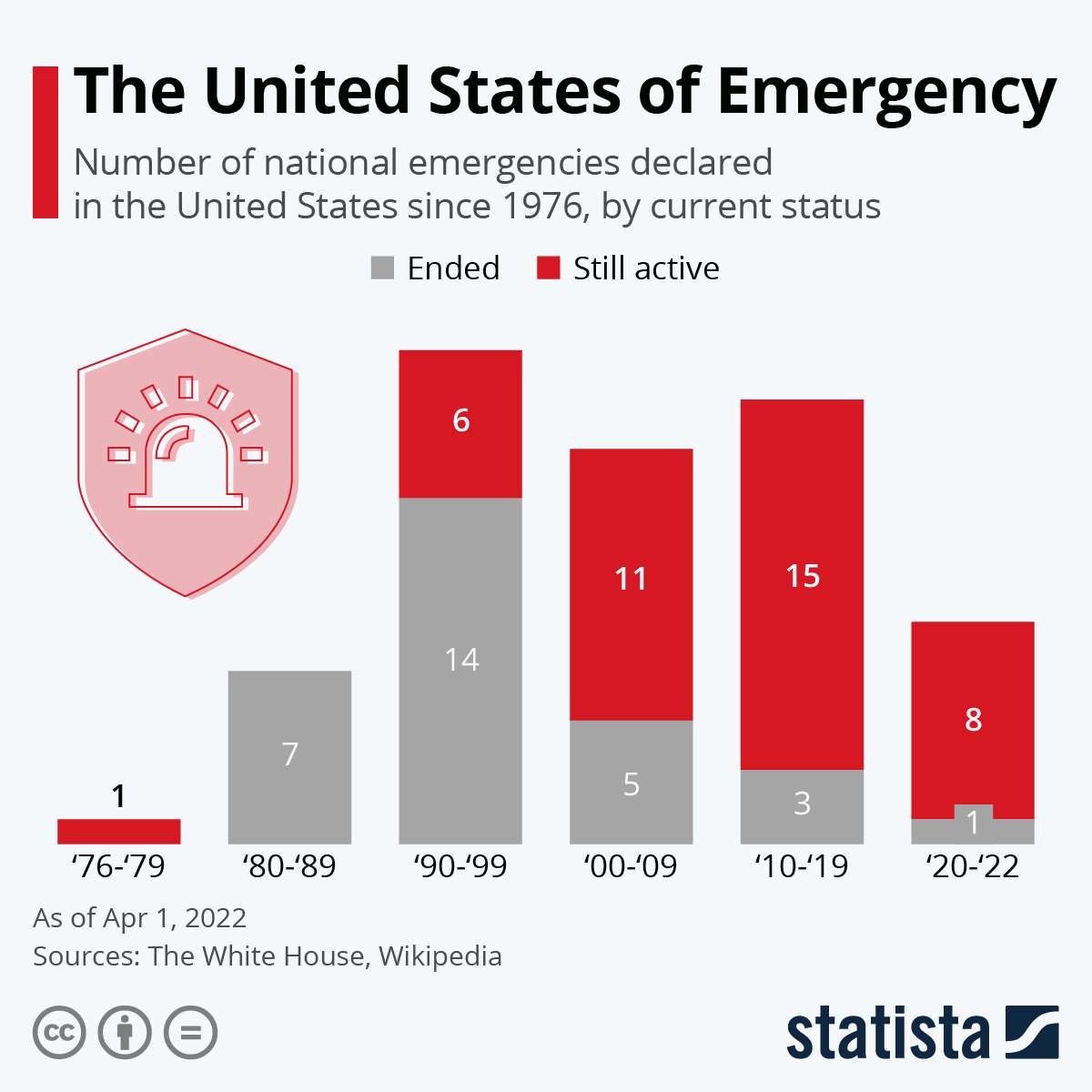On November 14, 1979, ten days into the Iranian hostage crisis, U.S. President Carter declared a national emergency. The Executive order, the first of its kind to be implemented citing the 1976 National Emergencies Act, stated:
"I, Jimmy Carter, President of the United States, find that the situation in Iran constitutes an unusual and extraordinary threat to the national security, foreign policy and economy of the United States and hereby declare a national emergency to deal with that threat. I hereby order blocked all property and interests in property of the Government of Iran, its instrumentalities and controlled entities and the Central Bank of Iran which are or become subject to the jurisdiction of the United States or which are in or come within the possession or control of persons subject to the jurisdiction of the United States."
This state of emergency is still in place today.
As this infographic shows, a state of emergency has been declared many times since, and around forty others are also still active in 2022. The sitting president is required to declare a continuation of the state of emergency each year. The latest examples signed off by President Biden on March 30 were emergencies with respect to Somalia, Sudan and 'significant malicious cyber-enabled activities' - initially brought into force in 2010, 2015 and 2014, respectively.
So what is the purpose of these emergency declarations, and why are presidents so willing to keep them running? In a 2014 interview with the Washington Post, Professor of Sociology and International Affairs in the Princeton, Kim Lane Scheppele, said: "What the National Emergencies Act does is like a toggle switch, and when the president flips it, he gets new powers. It's like a magic wand. and there are very few constraints about how he turns it on".





















